
Diversifying Portfolio
by Opinion Express / 09 January 2019When it comes to investments, the adage, ‘Don’t put all your eggs in one basket’, comes to mind. Diversification essentially means the strategic allocation of investments among different assets and their categories to spread the money around so that exposure to any one type of asset is limited. This helps manage risk and reduce volatility of portfolio over a period of time. One of the keys to successful investing is to learn the art of maintaining fine balance between comfort level and time horizon.
If one invests conservatively for retirement at a young age, he/she may run the risk of investment growth not keeping pace with inflation. Conversely, if one invests too aggressively, when one is older, they may face a situation where their savings are exposed to market volatility. This can erode the value of their assets at an age when one has fewer opportunities to recoup losses.
One way to balance risk and reward in an investment portfolio is to diversify assets. Although diversification does not ensure profit or guarantee no losses, it may help mitigate risk. It does help in reducing the number and severity of ups and downs. Diversification does not aim to maximise returns but limits the impact of volatility on a portfolio. To better understand this concept let us look at the table along with this article which contains hypothetical portfolios with different asset allocations from 1926 to 2017.
The most aggressive portfolio shown in the table comprises 60 per cent domestic stocks, 25 per cent international stocks and 15 per cent bonds. It has an average annual return of 10.02 per cent. The best 12-month return stood at 134 per cent, while its worst 12-month return lost nearly by 61 per cent. This is too much of volatility for investors to endure.
However, as we can see, a slight change in the asset allocation tightened the range of those swings. It is also clear that additional fixed income investments to a portfolio slightly reduces one’s expectations for long-term returns. But this may significantly reduce the impact of market volatility. This is a trade-off many investors feel is worthwhile, particularly as they get older and more risk-averse.
Factoring time into diversification strategy: People are generally accustomed to thinking about their savings in terms of goals —retirement, college, a down payment or a vacation. But as one builds and manages his/her asset allocation, regardless of which goal he/she is pursuing, there are two important things that must be considered: First, the time horizon ie the number of years when one would need the money back and second, attitude toward risk.
To take an example, a young adult may think of a goal that is 25 years away, like when he/she retires. Since the time horizon is fairly long, he/she may be willing to take additional risk in pursuit of long-term growth. The investor may be under the assumption that there’s enough time in hand to regain lost ground in an event of short-term market decline. In that case, higher exposure to domestic stocks may be appropriate.
However, risk tolerance plays a crucial role here as well. Regardless of the time horizon, one should undertake risk with which he/she is comfortable. So even if one is saving for a long-term goal, or is more risk-averse, he/she may want to consider a more balanced portfolio with some fixed income investments. Regardless of the time horizon and risk tolerance, even if one is pursuing the most aggressive asset allocation model, he/she may want to consider including a fixed income component to help reduce overall volatility of the portfolio.
The other thing to remember about time horizon is that it keeps changing constantly. So, let’s say one’s retirement is 10 years away, he/she may want to re-allocate their asset to help reduce exposure to higher-risk investments in favour of more conservative ones like bond or money market funds. This can help mitigate the impact of extreme market swings on portfolio, which is important when one needs the money relatively soon. Once they enter retirement, a large portion of the portfolio should be more stable. Lower-risk investments can potentially generate income. But even in retirement, diversification is key to help manage risks. So just as one should never be 100 per cent invested in stocks, it’s probably a good idea to never be 100 per cent allocated in short-term investments if time horizon is greater than one year.
After all, even in retirement one needs exposure to growth-oriented investments to combat inflation and help ensure that the assets last for what could be a decades-long retirement. Regardless of the goal — time horizon or risk tolerance — a diversified portfolio is the foundation of any smart investment strategy.
(The writer is Assistant Professor, Amity University)
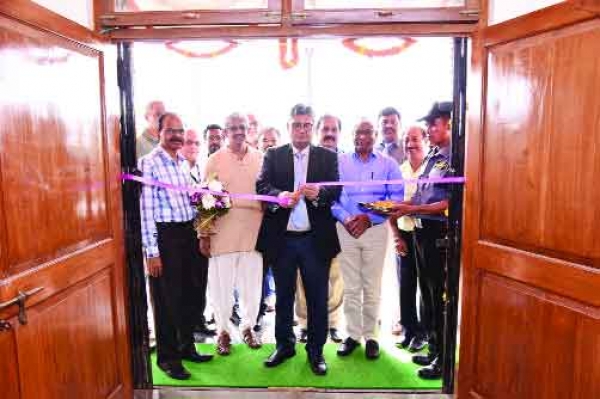
About The Corporates
by Opinion Express / 07 January 2019Some updates:
NSIC sub branch opened in Goa
The joint secretary of the Ministry of Micro Small and Medium Enterprises (MSME) and the CMD of National Small Industries Corporation (NSIC), Sudhir Gar, inaugurated the NSIC sub-branch office at the New Building at Verna Industrial Estate in Goa recently in the presence of the president of the Verna Industrial Estate, Damodar Kochkar, their Executive Committee Members and various other MSME Units
NHPC-NTNU collaborate to research on hydropower
The NHPC Limited, India’s premier hydropower company, has signed a memorandum of understanding (MOU) with the Norwegian University of Science and Technology (NTNU), to facilitate cooperation in research and education of hydropower during the India-Norway Business Summit 2019 held at New Delhi recently. This collaboration will allow for research that is of mutual interest and will aid in undertaking studies in the areas namely dam construction and safety, sediment handling, variable speed operation, pump turbines in existing power plants, future market structures and prices, optimal hydro design in the future power system and hydrology models.
SECL registers growth in coal production in Q3, 2018
The South Eastern Coalfields Limited (SECL), the largest coal producing subsidiary of Coal India Limited, has registered an impressive growth heading towards the coal production target of the year. During the period from April to December 2018, SECL’s coal production and off-take grew by 8.89 per cent and 4.06 per cent respectively. During the same period, SECL’s coal production was 110.751 Million Tonnes (MT) and the Off-take was 115.433 Million Tonnes (MT). The Over Burden Removal was 137.796 MT during this 9-month period. The coal production in the third quarter itself was 38.517 MT.
The Lieutenant Governor of Delhi Anil Baijal, accompanied by the CMD of NBCC Dr Anoop Kumar Mittal, visited the NBCC’s East Kidwai Nagar Redevelopment project in New Delhi. Dr Mittal apprised the LG on the project which is equipped with world class amenities and an eco-friendly and zero waste system.
The students of Guru Gobind Singh Indraprastha University, Dwarka, participated in the All India Inter University Championship 2018-19 held at KIIT, Bhubaneswar. They won 1 Gold Medal in 560 Kg outdoor mix category, 1 Gold Medal in the 600 Kg beach men’s category and 1 Silver Medal in the 540 Kg beach mix category. The vice chancellor of GGSIPU Anil Kumar Tyagi, the pro-vice chancellor Phusplata Tripathi, the registrar Satnam and the director of student welfare C S Rai, felicitated the winners for their achievements
Writer: The Pioneer
Source: The Pioneer
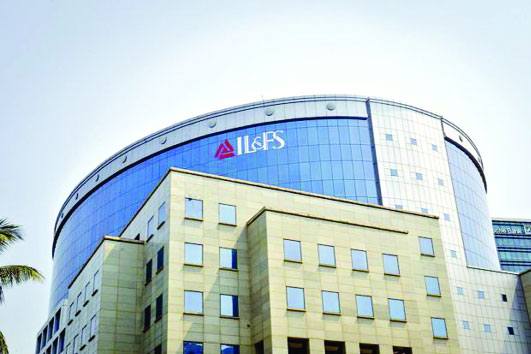
The Liquidity Crunch Exposes Weaknesses in the Workings of NBFCs and the Bond Market
by Sanju Verma / 25 October 2018The rapid snowballing of debt defaults by IL&FS and its group entities into a system-wide liquidity crunch has exposed well-hidden fault-lines in the workings of both non-banking finance companies (NBFCs) and the Indian bond market. All that IL&FS needs to do is, drift with the temporary liquidity crunch to boost the confidence of its shareholders and investors.
Infrastructure Leasing & Financial Services (IL&FS), originally promoted by HDFC, Central Bank of India and Unit Trust of India in 1987, operating via 169 subsidiaries, special purpose vehicles and joint ventures, has pioneered the infrastructure revolution in more than one way, with path-breaking projects such as the Zoji La tunnel Pass, Delhi-Noida toll bridge, GIFT, Gujarat International Finance Tec-City and umpteen others. LIC, Orix Corporation of Japan and ADIA, Abu Dhabi Investment Authority, that hold 25.34 percent, 23.54 percent and 12.56 percent each in IL&FS, are today its top three shareholders.
Congress president Rahul Gandhi, who has been tweeting feverishly in the last few days, questioning the need for any potential bail-out by LIC, has conveniently forgotten that it was under the erstwhile Congress-led dispensation that LIC acquired significant stakes in IL&FS in 2005, 2006 and, picking up as many as 19.34 lakh shares in 2010. The fact that LIC pumped in Rs 41,000 crore in 2007-08 and Rs 35,000 crore in 2008-09, with its outstanding exposure to the Indian equity markets at a whopping Rs 20,0000 crore by January 2009, amidst the Lehman meltdown, is a testimony to the fact that LIC used its reinvestible surpluses to stabilize markets, then.
If anything, a series of measures by the Narendra Modi Government to instill confidence in the money markets, which had seen the commercial paper (CP) yields rising by 20-40bps for even top-rated issuers, in the aftermath of the IL&FS imbroglio, deserve praise. For instance, the interbank liquidity deficit was addressed by allowing banks to carve out 15 percent holdings from their statutory liquidity reserves, against the earlier 13per cent to meet liquidity coverage ratio (LCR) requirements, thereby boosting systemic liquidity by an additional rupees two lakh crore.
This, coupled with an open market operation’s (OMO) announcement of Rs 36,000 crore for the month of October by the Reserve Bank of India (RBI), calmed the bond markets, with benchmark 10-year bond yields retracing from 8.23 percent last week to 7.99 percent on October 1. Three group companies of IL&FS are listed on the Indian bourses, namely, IL&FS Investment Managers Ltd, IL&FS Engineering and Construction Company Ltd and, IL&FS Transportation Networks Ltd. Importantly, many mutual funds, banks, insurance companies, non-banking financial companies (NBFC) and housing finance companies, have direct or indirect exposure to IL&FS.
Hence the National Company Law Tribunal’s (NCLT) decision to allow the Government to take-over IL&FS and supersede the erstwhile 10 member board, vide Article 241(2) of the Companies Act 2013, is a prompt and timely one that saved the Indian financial system from any potential cascading effects, limiting the collateral damage, if any. The alacrity, decisiveness and sheer professionalism with which the Modi Government took charge of IL&FS, is unmatched in Indian financial history.
The current embattled state which IL&FS finds itself in, thanks to gross mismanagement by the erstwhile board, is a temporary one arising out of asset-liability mismatch (ALM). In sharp contrast, the Lehman crisis in 2008, with Lehman filing for Chapter 11 Bankruptcy on September 15, 2008, was one of the insolvencies. Hence, desperate attempts by a disjointed Opposition to draw parallels between IL&FS and Lehman, smack of ignorance and a vested agenda to discredit the Modi Government that has been repeatedly praised by the likes of the IMF and the World Bank for turning around the Indian economy into the sixth largest, globally, from a fragile state it had been pushed to in 2012-13.
Do note, the size of debt assets under management of mutual funds in India is over Rs 18 lakh crore, with roughly 17per cent of that invested in NBFCs. Hence, IL&FS is simply too big to fail. Again, IL&FS is a huge borrower accounting for two percent of the outstanding CP market, one percent of the debenture market and roughly 0.7per cent of banking system loans. Interestingly, despite the sheer scale of numbers involved, the resilience of the Indian financial system shone through, with Indiabulls Housing Finance raising more than Rs 500 crore at 8.36 percent via CP market, and a Tata group company raising Rs 3,488 crore via non-convertible debentures (NCD) for the first time in 10 years at a rate of between 8.70-9.1per cent last week, even as the IL&FS issue raged on.
Coming back to the IL&FS fiasco, what triggered nervousness was a default by IL&FS on repayment of a Rs 1,000 crore short-term loan from Small Industries Development Bank of India (SIDBI) on September 5, 2018, followed by a series of defaults. The fact that in less than a month of the IL&FS crisis and barely within 48 hours of the IL&FS Annual General Meeting that was held on September 29 this year, management take-over had been affected by the Modi Government by October 1, 2018, speaks volumes of the current Government’s commitment to the millions of retail investors who have parked their money in debt funds that invariably have some kind of exposure to IL&FS.
Do not forget that in a rather similar incident in 2009 wherein a promoter, Ramalinga Raju of Satyam Computers was summarily removed for defrauding and cooking up the company’s books. The erstwhile Congress-led UPA Government back then had allowed the entire Satyam crisis to fester for seven long months from January till July 2009, before reaching a tentative solution, doing irreversible damage to the Indian financial markets in the bargain.
The IL&FS issue, however, raises questions about ‘conflict of interest’ plaguing credit rating agencies. In this entire issue, while the Modi Government and the RBI showed exemplary nimble-footedness in limiting collateral damage, the credit rating agencies had assigned investment grade ratings till as recently as August 2018, which was then reduced to junk status by September 2018 in a classic knee-jerk reaction.
That the IL&FS group was over-leveraged and rumored to have borrowed between 10-18 times its equity, to fund its infrastructure projects, most of which bring in returns over 20-25 years, was known to the credit rating agencies. They simply refused to even blink till things reached an inflection point.
Making things worse, IL&FS’ borrowings were all repayable in the short to medium-term of roughly eight to 10 years. What abetted the asset liability mismatch was cost overruns and inability to roll over short-term obligations. However, as things stand now, on October 31, 2018, the new board will submit a resolution plan to the NCLT. That could involve monetization of unviable assets, reducing stakes in 25 odd projects being operated by the company, possible Rights/NCD issues, raising authorized capital, deleveraging the balance sheet by 38 percent or roughly Rs 30,000 crore, bringing in new partners for some projects and the like.
At the core, IL&FS is an inherently strong company with assets worth Rs 1,15,815 crore as of fiscal 2018, with a standalone reported gearing ratio of 3.04 and a regulatory gearing ratio of 2.30. It has umpteen profit-making subsidiaries like the Khed Sinnar Expressway, Amravati Chikhli Expressway, Barwa Adda Expressway, Fagne Songadh Expressway, and others. Thanks to the Narendra Modi dispensation, by choosing not to hide the IL&FS issue by fraudulently evergreening its loans, but by tackling the problem head-on, including ordering a Serious Fraud Investigation Office probe to get to the bottom of things, the confidence in money markets has been restored.
Needless to add, the big message for companies and investors from the IL&FS issue is, not to go overboard in “borrowing at the short end and lending at the long end of the market”, as asset-liability mismatches can be a vicious cycle. That said, those indulging in fear-mongering by saying that IL&FS’ lenders will have to take a haircut of Rs 15,000-20,000 crore in a bid to save it, are completely wrong. IL&FS has deep pockets, strong capital base with good operational parameters, net assets higher than net liabilities, and all it needs is, the renewed confidence of its shareholders and investors, to tide over the temporary liquidity crunch.
If push comes to shove, even selling a minuscule stake in one of its subsidiaries, from the umpteen profitable ones it has in its kitty, can replenish its net worth and generate between Rs 20,000-30,000 crore, giving it the firepower to have the cash flows to service its debt obligations, without erosion in its core capital base.
And once market sentiment stabilizes, given its excellent track record in executing and financing some of the toughest infrastructure projects in the country, IL&FS, with a new board at the helm, should be able to continue to access the financial markets at competitive rates and get back to doing what it does best… (—)powering India’s superlative infrastructure growth story with projects like the Chennai-Nashri road tunnel project, that is a befitting example of what political will under the Narendra Modi dispensation has been able to accomplish.
(The writer is an economist and chief spokesperson for BJP, Mumbai)
Writer: Sanju Verma
Courtesy: The Pioneer
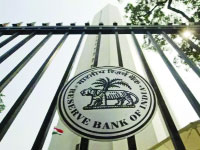
Government Running into Trouble with RBI
by Opinion Express / 24 October 2018The government is facing a stand-off with the Reserve Bank of India on the issue of latter’s autonomy.
The Narendra Modi Government just cannot seem to catch a break when it comes to dealing with statutory bodies and officers. And opinion is divided on whose fault that is. After a revolt in the Central Bureau of Investigation, it now appears that the Government and the Reserve Bank of India are at loggerheads. This is because the Government is reported to have invoked Article 7 of the Reserve Bank of India (RBI) Act which allows the Government in some manner to supercede the autonomy of India’s central bank. Of course, the conspiracy theorists are out in force on their websites — allegations are rife that the Government has taken this step at the behest of friendly industrialists who are being forced to borrow money at higher rates; by invoking Section 7, the Government can ‘force’ the RBI to order Indian banks to loosen their purse-strings.
There is an argument to be made that while the RBI has been extra strict with banks, especially public sector banks, in a crackdown on Non-Performing Assets (NPA), this has followed a period of over-lenient central bank supervision loans to all and sundry. As a result, now all financial institutions whether in the public or private sector have had the fear of God instilled in them when it comes to disbursing loans as they are petrified of possible NPAs. This, in turn, has virtually brought economic activity in India to a standstill.
According to media reports, Section 7 has been invoked three times already over the past few weeks at least in part to reclassify the massive NPAs plaguing India’s power sector. Invoking Section 7 is, for better or for worse, a vote of no-confidence in the RBI Governor. It is not as if the RBI and the Government cannot work together. But when the Government compels the RBI to act in a certain way, there are few options in front of the RBI Governor.
Urjit Patel was widely thought to have expressed his displeasure at Government interference through a media interview given by his deputy V Acharya. His position seems to be untenable and the odds are that Patel may have no option but to resign. But that’s not a done deal, yet. After all, we are in an election year and the Government would not want another once-hallowed institution to be seen to be imploding on its watch. But there is also a view emerging in Government that it has no option but to demolish the ‘deep state’ established by the ‘Congress System’ if it is to fulfil what it thinks is its mandate from the people of India.
Courtesy: The Pioneer
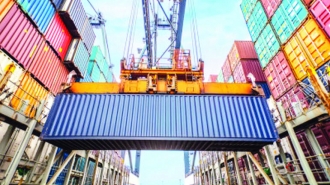
Impact of Depreciating Value of Rupee on India’s Trading Policies
by Tripti Sangwan / 01 September 2018As the vale of Indian rupees is depreciating with an increasing rate, policy-makers require to thoroughly analyze the performance of the currency, export earnings and import payments.
The value of rupee against US dollar has depreciated to an all-time low of Rs 70, the causes for which have been attributed to external factors, which are, of course, not under our control. The Indian economy must, however, not look too far to sail through testing times. The solution lies in history. Empirical research may provide the best direction to use international trade as the path for rapid development in taking advantage of the depreciation.
Globalisation has rapidly transferred from one sector to the other, and is now growing its pace to the financial sector. This certainly benefits India in terms of growth of investment bonds and equity investments. But chances are ripe that it may also backfire in the form of transmitting poor performance of other currencies to India, as it happened in a case where the Turkish Lira adversely affected the Indian rupee via non-deliverable forwards.
It is, therefore, essential to study the real reasons for the continuous depreciation of the Indian rupee as also find out ways to cure the economy. A wise approach would be to roll out precautionary economic policies to protect the Indian currency and use the depreciation to the hilt. Answer also lies in a through analysis of the performance of the Indian currency, export earnings and import payments of the country.
As per World Bank data, with the depreciation of the Indian currency by 55.81 per cent (2007-2018), export earnings of India increased by 70.1 per cent and import payments increased by 61.42 per cent. This signifies that India’s export earnings increased faster than import payments. Even then, India is still grappling with trade deficit. This because India has a huge backlog of trade deficit to clear. With the growth of import payments catching up to the growth of export earnings, trade deficit in July 2018 reached five-year high, despite vigorous growth in export.
The solution lies in a long-term plan and in taking advantage of the depreciation. Policy-makers need to focus on four broad aspects. First, India’s elastic export market should be destined to the developed countries, where Indian currency is performing poorly (depreciating) as compared to the destined country’s currency. This will enhance India’s export earnings as and when the Indian currency depreciates — exports will increase at a speedy rate as export commodities are elastic.
Second, India’s inelastic export market should be destined to countries where the Indian currency is performing stronger (appreciating) than the trading partner. This will be beneficial for the Indian economy when an increase in export earnings of our country from elastic exports is more than reduction in export earnings of inelastic exports.
Third, India’s elastic imports must originate from countries where the country’s currency is depreciating with respect to the trading partner. This will ensure that as imports become costlier, demand for import reduces.
Fourth, inelastic imports of India should be originated from countries where the Indian currency is the stronger relative (appreciating) to the import-originating country. This will ensure that when the Indian currency is depreciating, demand for goods will not increase, as they are inelastic. However, this will be fruitful if reduction in payment of elastic imports of India is more than the growth of import payments of inelastic imports.
Thus, India needs to carefully look at the international trade matrix of exports and import commodity basket and strategically identify the elastic and inelastic exports and imports. At the same time it must analyse the performance of the Indian currency with respect to its export destination and import origin and then allocate efficiently in the international trade. Although it’s easier said than done, only sound international trade policies are the linchpin for a strong and stable India.
(The writer is Assistant Professor, Delhi University, and a PhD scholar of Economics)
Writer: Tripti Sangwan
Courtesy: The Pioneer

Increased Manufacturing Capacity, Job Generation from Samsung’s Greater Noida Plant
by Opinion Express / 10 July 2018Samsung’s manufacturing plant inaugurated in Greater Noida yesterday is one of the greatest deals of the Modi government.
Where are the jobs?” is a constant refrain of the Opposition parties and especially Rahul Gandhi on his infrequent sojourns to India. But the Congress has a point even though they also spectacularly failed at building the jobs market when they were in power. India’s demographic dividend still stands the risk of becoming a major dilemma going forward with millions of unemployed and unemployable youth. One panacea to India’s lack of jobs was supposed to be Prime Minister Narendra Modi’s flagship ‘Make In India’ programme, a set of incentives for manufacturers of everything from consumer durables to fighter aircraft to make more of their products and acquire services from India.
Yet for years nothing changed, if anything India’s import dependence on certain products became worse. Three-quarters of the estimated $30 billion of consumer electronics and durables consumed in India annually is imported, mainly from China. Even many of the devices that have a ‘Made In India’ stamp were usually just assembled in India, workers often not doing much more value addition than turning screws. When Rahul Gandhi joked that every selfie a person took in India was like giving a job to a Chinese youth, he might have stretched the analogy a few steps too far, but the point was taken. India was living vicariously on Chinese imports of everything from toys to televisions. The irony of brands celebrating their Indian-ness while selling Chinese imports was lost on promoters, mainly in the smartphone space, gorging on hefty margins until the Chinese companies moved in themselves, squeezing out Indian brands.
But in Samsung’s expanded plant in Uttar Pradesh’s Greater Noida, which will become one of the world’s largest mobile phone plants, Narendra Modi has found a riposte. The new facility is expected to serve not just India but other emerging markets as well and by manufacturing over 120 million handsets annually, including many of the critical components in India, the expanded facility is expected to generate over 5,000 jobs. That is just a drop in the ocean to the quantum of jobs needed in India but this should give a boost to the ‘Make In India’ project and also a tool to Samsung in its fight against Chinese smartphone manufacturers, which have been flooding India. The South Korean firm will almost certainly lobby for higher import tariffs. At the same time, another South Korean firm, Kia Motors, is working overtime to ensure that their new factory in Andhra Pradesh opens as soon as possible to cater to India’s burgeoning car market, giving Narendra Modi a few case studies of ‘Make In India’ success. At the same time, German carmaker Volkswagen announced a ramp-up of Indian operations under its Czech band, Skoda, with a billion-Euro investment in Aurangabad and Pune. But a few stories do not a novel make, and the Government has to do much, much more to incentivise manufacturing in India and make India a favoured destination for new factories that cater not just to the domestic market but also global markets, especially as the world faces the very real potential of a trade war. One in which if India plays it smart, it might not be a net loser.
Writer: Pioneer
Courtesy: The Pioneer

Inflation & Middle East crisis will harm global economic recovery, says World Bank
by Kapil Dudakia / 01 October 2012It has been the question of the day at every high-powered international gathering for two years: Are we out of the woods? The answer at this year's World Economic Forum appears to be an optimistic "Yes, but..." The world may have stepped back from the particular brink of 2008, but it faces huge risks ranging from spiraling food and commodity prices to the danger of trade and currency wars, against a background of growing inequalities that threaten stability.
So at the start of the annual conference at Davos, celebrity economist Nouriel Roubini raised a glass that was half-full – or Nouriel Roubini raised a glass that was half-full - or was it half empty? - and declared it a metaphor for the global economy. Judging by the opening panel that Roubini shared with an international array of business leaders and economic thinkers, it is also a world that is struggling to come to terms with the historic transfer of wealth and influence away from the long-dominant West: Will countries collaborate? Can it work to everyone's benefit or will living standards in the developed world collapse? Will the world run out of re- sources? The panel struggled with these themes.
"There is a global economic recovery," said Roubini, who gained renown for predicting the crisis of 2008 and a few months ago was still warning against the possibility of a "double dip recession." He noted that "balance sheets are strong, confidence is rising," credit spreads have fallen and liquidity - the availability of credit has increased.
But he warned that in the U.S. and Europe, growth remained low and unemployment high, and the U.S. faced a continued real estate crisis and inspired little faith in its ability to tackle its deficit and debt. In Europe, markets have forced an austerity that endangers growth. And in an allusion to China, Roubini said there was "not enough exchange rate adjustment" and warned this could lead to "currency wars and eventually trade wars and protectionism." Advertising magnate Martin Sorrell said he was "surprised, very surprised" by how well business did in 2010, admitting he would not have predicted that the revenues of his firm - global communications empire WPP - would return to pre-crisis levels by the second quarter of last year.
But he warned that corporations were so spooked by the crisis, and perhaps also by the current risks, that "there is an unwillingness in the West to invest in capacity and in increasing fixed costs" - such as new employees. So even though revenues in many cases are back to where they were, people have not been rehired - which explains unemployment but also the high profit margins that are buoying stock prices and balance sheets.
One bright spot for the businessmen: whereas James Turley, chairman and CEO of Ernst & Young, said business felt "demonized over the last couple of years," he said he was now identifying a change of tone from Washington that he attributed to a realization that "business needs to succeed in order for them to create jobs for people." But the panelists all agreed that the global recovery was uneven: tepid in Western Europe, slow in the U.S. and fast in many of the emerging economies. Reflecting the global transition, panelists noted that the transfer of wealth was not just from west to east - but also to the south, with impressive gains in Latin America and Africa. Expanding on the previous shorthand acronym "BRIC" - how Goldman Sachs described the emerging global relevance of Brazil, Russia, India and China - the catch-phrase seemed to be the "Next 11" - a clutch of other emerging nations ranging from Indonesia to Vietnam.
It is in these emerging economies that one sees most of the interesting initial public offerings on stock markets, Turley said. And he noted that trade between emerging markets themselves - by- passing once-dominant trading partners in the West was increasingly common. But the recovery is fueling demand that is causing fast gains in commodity prices - oil and metals, for example - and runaway food prices that are blamed for increasing social instability in some places and account in part for the recent revolution in Tunisia. For many countries, panelists noted, this raises the question is whether to raise interest rates to dampen consumption and bring down prices: that also drives up the currency - suppressing exports and it can harm growth.
Turley also noted that the world would soon face great demo- graphic imbalances, creating some unexpected alliances: In 2020, he said, the average age in the U.S. and China will be 37- 38; in Western Europe and Japan it will be 47-48; and in India and the Middle East it will be 27-28. "This will cause enormous impact and an array of policy issues," he said. The panel identified inequality - in both developed and emerging economies - as a major problem that could feed social unrest, creating uncertainties that might stifle the recovery.
Sorrell noted that wealthy people are more likely to invest their spare cash in financial assets "that causes asset bubbles" where as when the wealth is more evenly spread the chances of growth stimulating and therefore wealth spreading consumption increases. "You attack it with increasing marginal income rates" which is rarely a popular policy, Sorrell said. Azim Premji, chairman of Wipro, a global information technology firm, said inequalities were increasingly visible in his country of India and elsewhere in the developing world, where rapid ad- vances were not spread equally. Zhu Min, a former deputy governor of the People's Bank of China, said the billions of people in the developing world wanted to have the same things the developed world has: "An American life, a big car, pension... But it won't work because we don't have the resources." Would these aspiring billions really agree to make do with less? In a way, but not exactly, Zhu Min told The Associated Press: "We don't want to adopt the Western model. It won't work. It will be necessary to come up with a new model."

GLOBAL ECONOMIC CRISIS, FIXING IT
by Opinion Express / 01 September 2012- Herman Silchan | Canada
Risis is not restricted to the US dollar but has affected all financial institutions of the world. Trigger was the downgrade on August 5, 2012, of United States rating from AAA to AA+ by Standard & Poor, (S&P) a private rating agency. The consequence has been that all stock markets in the world recorded massive declines. The downgrade complemented the turmoil in Europe with the debt problems faced by PIGS (Portugal, Ireland, Greece, Spain). PIGS joined by France and Germany who have their own Euro-dollar problems to cope with.
World Economic History snapshots: impoverishment of the world
India and China accounted for 50% of world GDP for all of the past 2000 years. (Now they account for only 25% of world GDP). The impoverishment was caused by colonial exploitation.
US economy: some history lessons
26.5 Decline in GDP (from 1929 to 1933).
Unemployment: 24.9% (1933), >20% (1932-35) 85% in stock prices; 47% in industrial production; 80% in home building (1929-33)
Double-dip recession of 2011 evokes these memories.
Why is US $ a big deal in global finances?
US $ dominates currency circulation in world economy.
$ Forex holdings are held by countries outside USA.
US trade deficits and consequent increased supply of US $ to the world meant that over 66% of US $ (1980- 2005) are held outside USA. Two- thirds of US $ (Over $1 trillion) are in circulation outside USA.
Total Forex business: $3.98 trillion (US$ accounts for $1.69 trillion or 42.5%; Euro accounts for 19.5%).
Causes for dominance of US$
After the formation of OPEC and Petroleum products cartel, Kissinger ensured that these petro-dollars were stated in US$ terms and recycled in the world.
Thanks to forex, trade, investment, financial derivatives (puts and calls, credit swaps, participatory notes), petro-dollars, US $ is the dominant currency.
Total Forex reserves: $9.7 trillion (i.e. 16.7% of World GDP 58.26 tril- lion). Of these reserves, 2/3 are in US $, held and transacted in financial markets.
Keynesian economic model
Keynes was instrumental in introducing the current mainstream eco- nomic thought, in the wake of the First and Second World Wars.
He wrote two works:
The Economic Consequences of the Peace (1919)
How to Pay for the War: A radical plan for the Chancellor of the Exchequer (1940)
Economic consequences of peace (1919)
Keynes wrote in 1919: "If we aim deliberately at the impoverishment of Central Europe, vengeance, I dare predict, will not limp. Nothing can then delay for very long that final war between the forces of Reaction and the despairing convulsions of Revolution, before which the horrors of the late German war will fade into nothing."
He attacked the post World War I deflation policies with A Tract on Monetary Reform in 1923 - an argument that countries should ensure stability of domestic prices, avoiding deflation even at the cost of allowing their currency to depreciate.
Keynes's predictions of disaster were borne out when the German economy suffered the hyperinflation of 1923, and again by the collapse of the Weimar Republic and the out- break of World War II. Only a fraction of reparations were ever paid.
How to pay for the war (1940)
At the height of the Great Depression, in 1933, Keynes published The Means to Prosperity, which contained specific policy recommendations for tackling unemployment in a global recession, chiefly counter cyclical public spending and contains one of the first mentions of the multiplier effect.
Keynes' General Theory of Employment, Interest and Money (1936) argues that demand, not sup- ply, is the key variable governing the overall level of economic activity. Without government intervention to increase expenditure, an economy can remain trapped in a low employment equilibrium. Keynes advocated activist economic policy by government to stimulate demand in times of high unemployment for example by spending on public works.
One consequence was the US announcement of Marshall Plan
Key argument was that war effort should be largely financed by higher taxation and especially by compulsory saving (essentially workers loaning money to the government), rather than deficit spending, in order to avoid inflation. Marshall Plan finally ended up in the formation of European Community with Euro dollar as their common currency.
How to overcome the present economic mess?
(1) Promote public works, reduce unemployment
US and developed economies of the world should pause and learn lessons from history of the last 20 centuries. Impoverishment of colonies by the colonial loot should be recognized. Developed economies owe reparations to the impoverishment developing world which has come out of colonial dominance. One solution: Just as European Community and Eurodollar were formed, an Indian Ocean Community and Mudra as common currency of IOC should be instituted.This will lead to employment generation in ALL economies of the globe.Law of the Sea now expands territorial waters to 200 nautical miles, opening up new zone for economic exploitation. Projects are ready to link Vladivostok and Bangkok through Trans-Asian Highway and Trans-Asian Railway - projects which will provide the multi- plier effect made popular in economics by Keynes.
(2) Promote savings
Avoid the temptation to print US dollars. Slow down the US $ money circulation. Institute steps to reduce US and other Developed Countries' Current Account Deficit by increasing their exports of services for public works' financing in Developing countries, for e.g. IOC.
US current account deficit (1976 to 2009): $8.5 trillion which becomes forex reserves of nations outside USA.
Promote savings in USA and other Developed Countries.
Promote investment of $ held as cash by corporate.
(3) Ban financial derivatives
Financial instruments such as options, financial derivatives, and participatory notes create a false sense of financial health.They do not provide insurance cover, they only promote the development of excessive greed. To promote greater corporate social responsibility, take lessons from millennia old Dharma-dhamma institutions which promote social responsibility through sreni dharma (corporate responsibility) (e.g. makamai, a voluntary contribution of a percent- age of turnover to social causes).
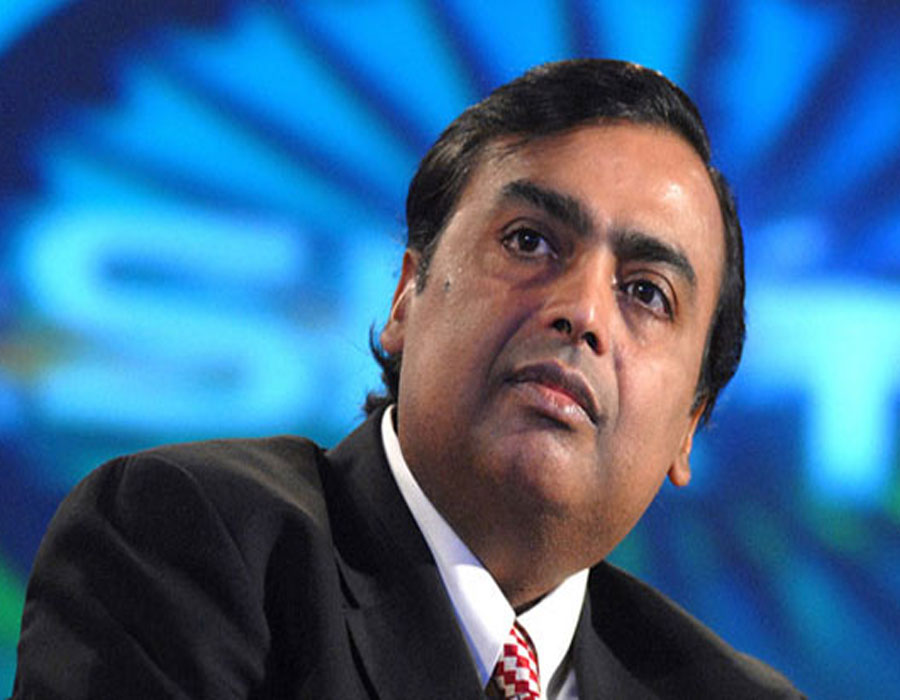
RIL to enter homeland security business
by Opinion Express / 01 May 2012Mukesh Ambani-controlled Reliance Industries Ltd (RIL) may be looking at major forays into homeland security and aerospace sectors. In the first firm indication of the group's intention, it has hired Vivek Lall, a former NASA scientist who aggressively led Boeing's military and commercial division in India for several years. Lall is joining RIL as president for a new venture which would be focused on homeland security and aerospace, sources said. A RIL spokesperson declined to comment. According to market sources, Lall could be leading the new RIL venture with cutting-edge homeland security solutions. There is also speculation that the group could go further down and enter aero-space arena at an appropriate time, one source said.
Reliance sources said Lall's appointment to pursue opportunities in the homeland security space is synergistic with the group's plans for broadband wireless access services. The group is expected to roll out the next-generation technology services soon. RIL is looking to develop safe and secure smart cities as well as systems for disaster management preparedness. When Lall headed the Boeing commercial arm it won over $25 billion worth of commercial aircraft business in three years, and during the past four years when he headed defence, space and security the company scooped up almost $10 billion worth of business in India.
Into the security sector could have significant impact on the entire industry, given the over-dependence of India on foreign suppliers for security solutions. Homeland security is a major growth sector, with national security agencies and state police forces on an unprecedented modernization drive. There is also a major demand for home-land security solutions from the private sector -- RIL itself is among the biggest consumers of security solutions in the country.
RIL's entry into homeland and aero-space security could have a far bigger impact than the entry of Indian groups such as Tata, L&T and Mahindra. Lall is among the new breed of professionals to join RIL from other companies. A few years ago, the group had hired R Ravimohan as executive to transform business processes from Standard & Poor's. A few months into his new assignment, Ravimohan had died of a heart attack. Other professionals who have joined the group in the recent past include ex-Citibanker V Srikanth and Gwyn Sundagul from Tesco Thailand. Srikanth was appointed as deputy CFO in July 2010 while Sundagul heads the Reliance Value retail format since December 2009.
FREE Download
OPINION EXPRESS MAGAZINE
Offer of the Month





